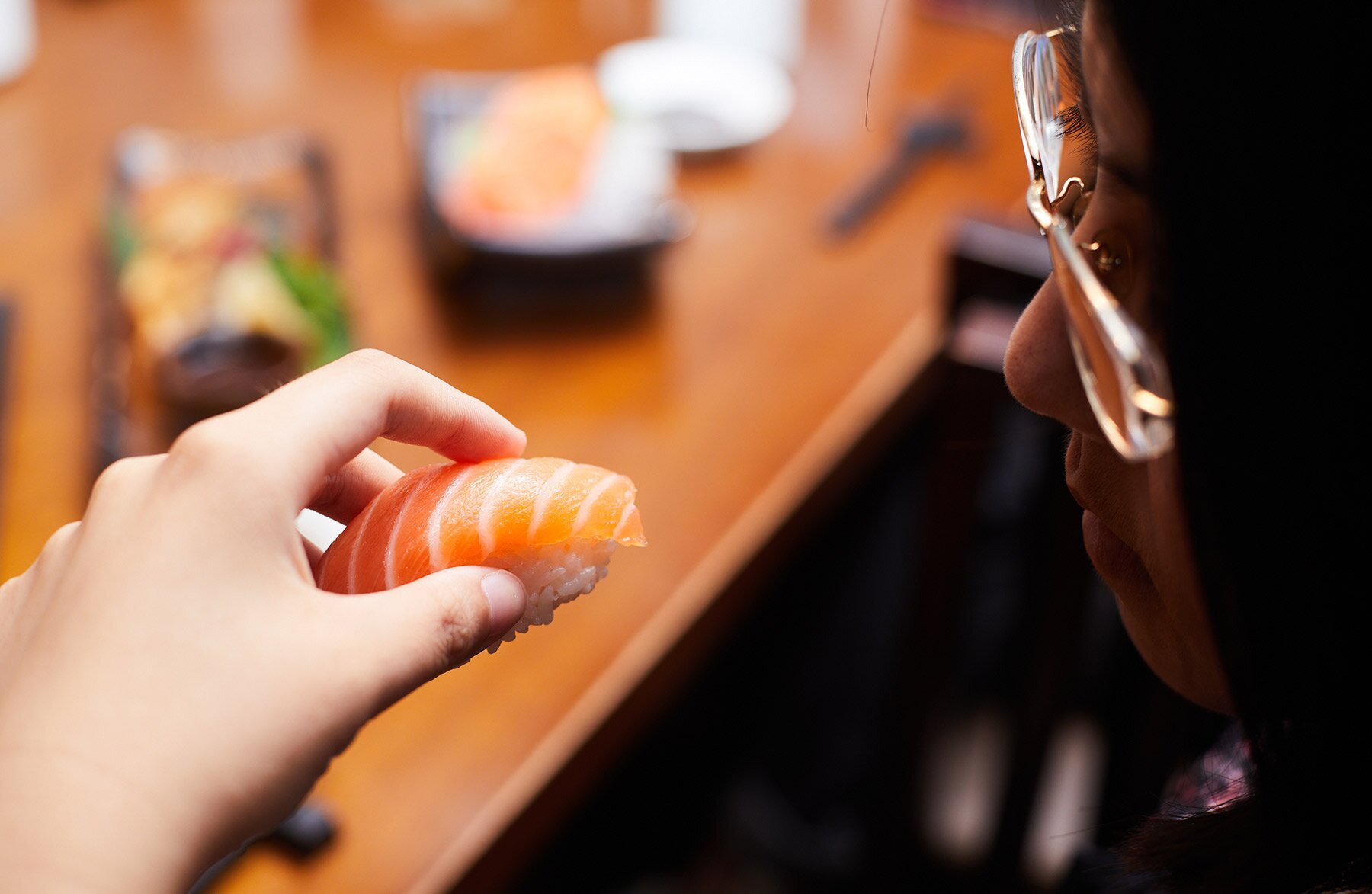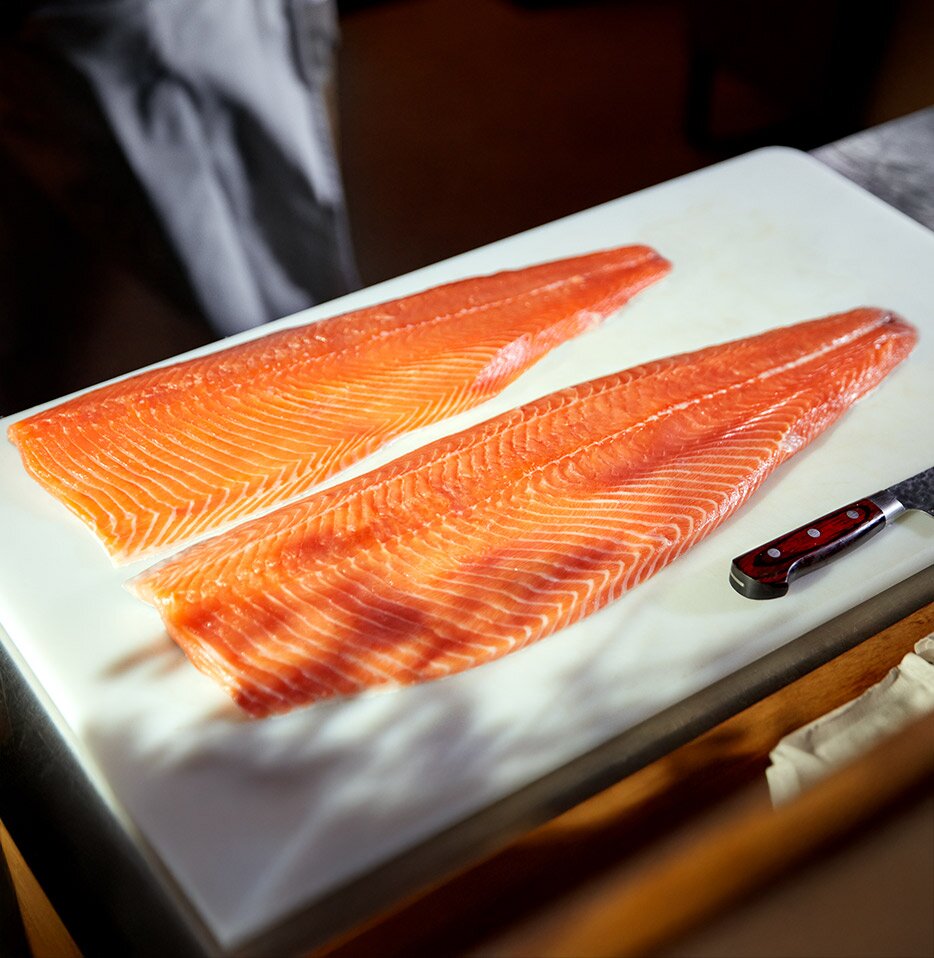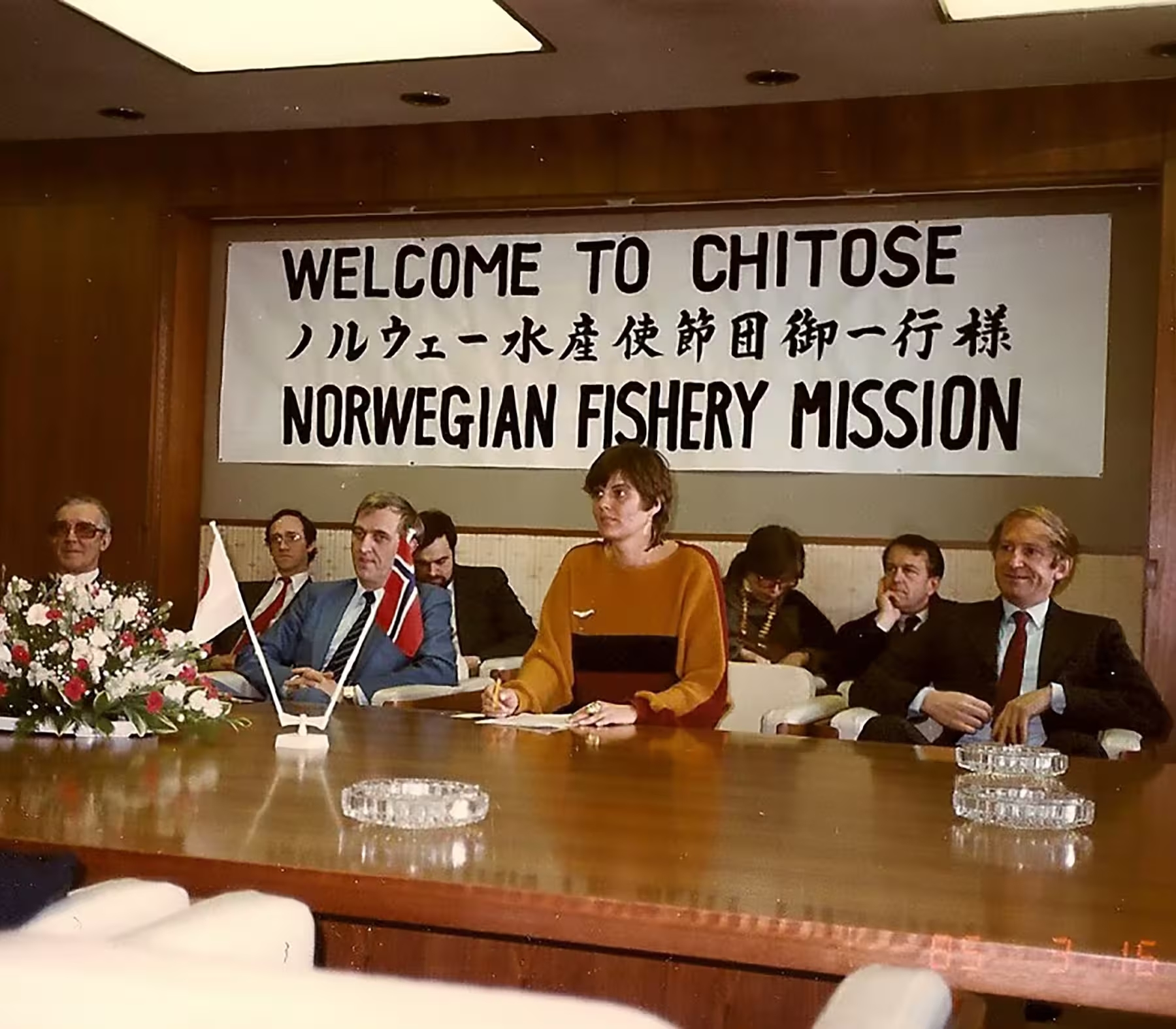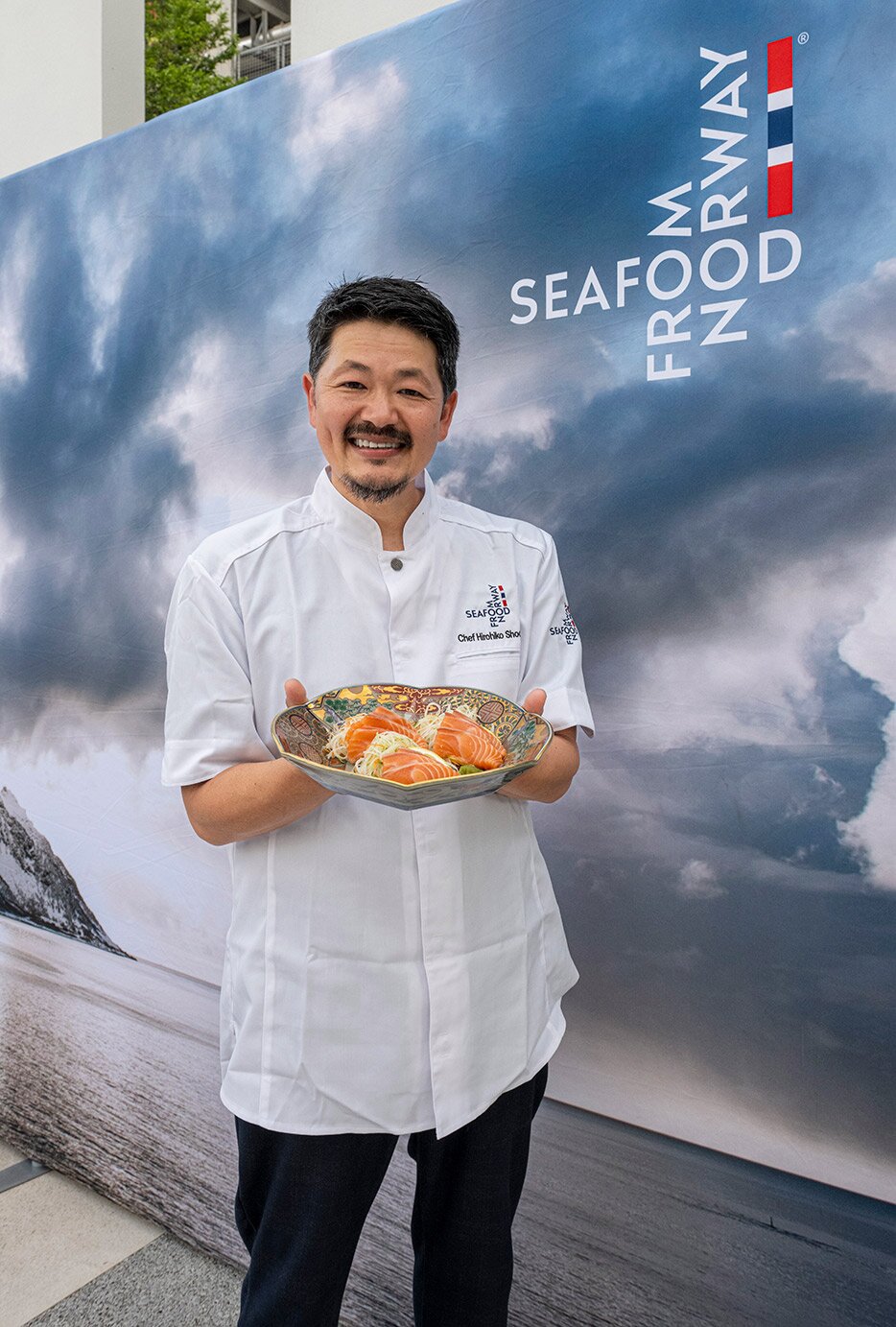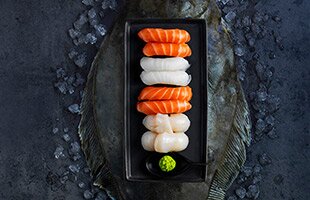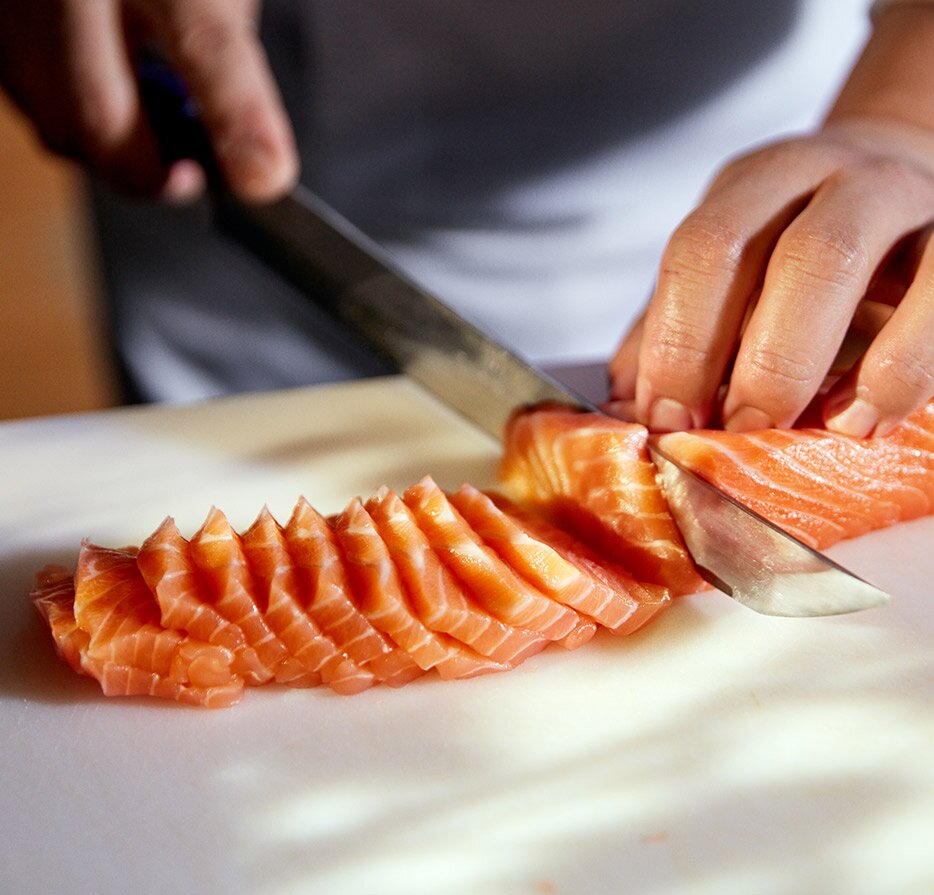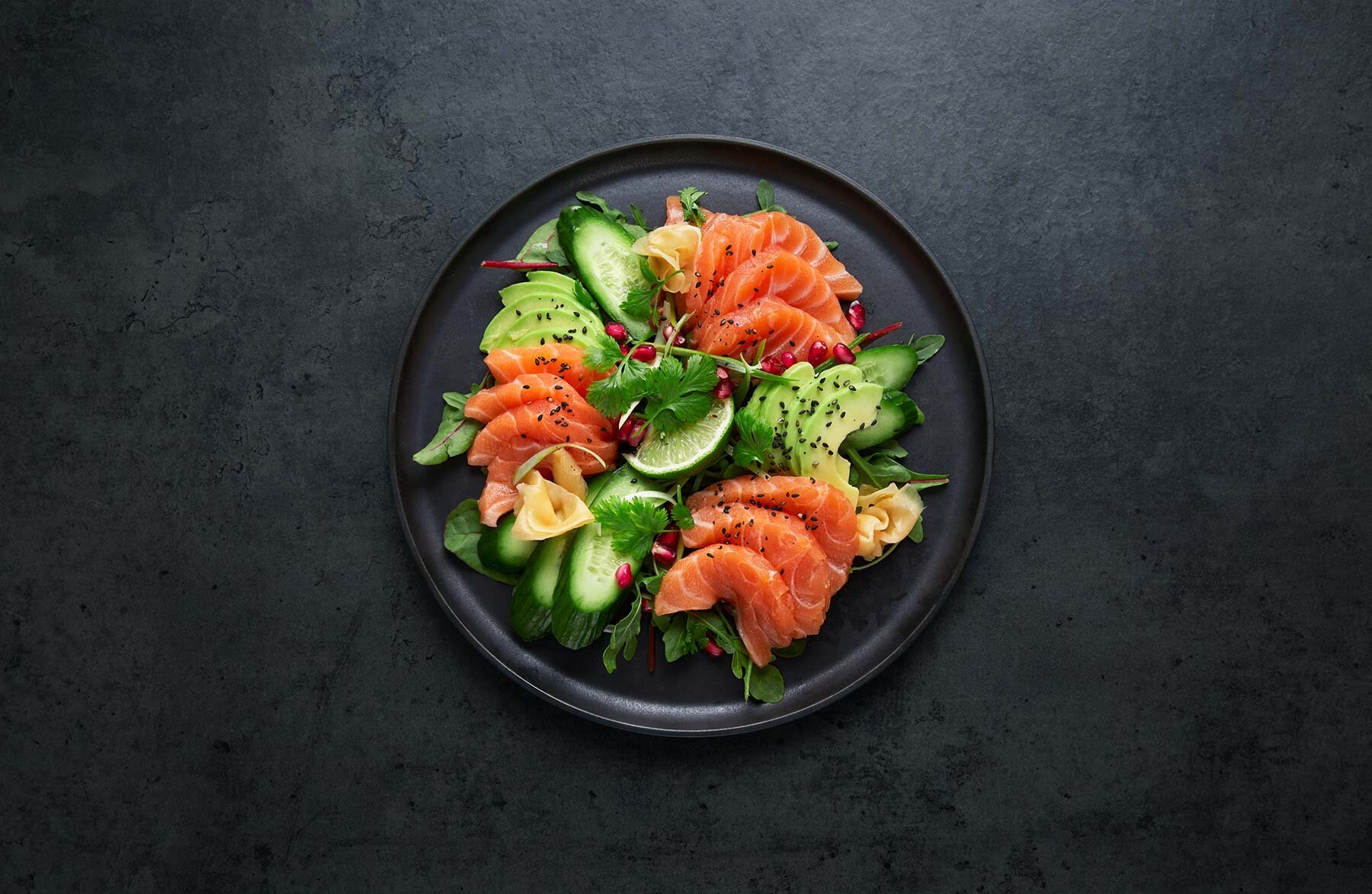A global sushi star
In 1985 a group of enthusiastic Norwegians packed their suitcases and travelled all the way to Tokyo, Japan. Their goal? Introducing the Japanese to Norwegian fish.
This in turn led to salmon sushi as we know it today, with Norwegian salmon as a sushi topping!
Salmon, as a species, was not common as a main ingredient for sushi like so many of us eat it today. Now, the popularity and reach of sushi globally is closely interlinked with the pink, popular fish from Norway – and vice-versa.
This is the story of how raw Norwegian salmon and exquisite Japanese cuisine became popular, all across the globe.
